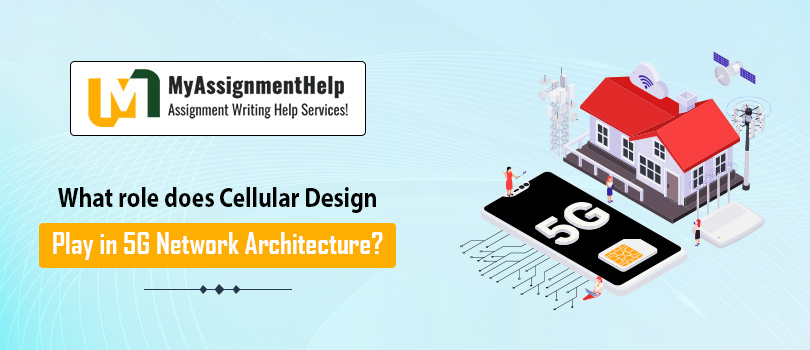In today’s fast-paced world, where seamless connectivity and lightning-fast internet speeds are paramount, 5G technology has emerged as a game-changer. 5G networks promise unprecedented speed, reliability, and low latency, opening up a world of possibilities for businesses and consumers alike. However, achieving the full potential of 5G relies heavily on an often-overlooked aspect: Cellular Design. In this blog post, we will explore the essential role that Cellular Design plays in the architecture of 5G networks.

Understanding Cellular Design
Cellular Design Assignment Help, also known as network planning and optimization, is the process of strategically designing and deploying cellular network infrastructure to provide efficient and reliable coverage. This design involves configuring the placement of base stations, antennas, and other network elements to ensure optimal signal strength and data throughput.
The Evolving Landscape of 5G
Unlike its predecessors, 5G is not just an incremental improvement; it’s a revolutionary shift in network technology. While 4G networks primarily relied on large cell towers to provide coverage, 5G introduces a diverse range of cell sizes and types. These cells include macrocells, microcells, picocells, and femtocells, each serving a specific purpose and catering to different user requirements.
The Role of Cellular Design in 5G
Density and Capacity: 5G networks are expected to support a massive number of devices simultaneously. Cellular Design becomes crucial in ensuring that network density and capacity are optimized. By strategically placing smaller cells in high-density areas and larger cells in suburban or rural regions, 5G networks can provide consistent and high-speed connectivity to users.
Low Latency: One of the defining features of 5G is its ultra-low latency. To achieve this, Cellular Design must minimize the physical distance between users and network infrastructure. By placing small cells closer to users, 5G networks reduce latency, enabling applications like real-time gaming, augmented reality, and autonomous vehicles.
Coverage: 5G aims to provide ubiquitous coverage, extending beyond urban centers into remote areas. Cellular Design ensures that the network’s reach is optimized, even in challenging terrains. This is achieved by strategically deploying cells and antennas to cover areas that were previously underserved.
Spectrum Efficiency: 5G utilizes a wider spectrum range, including millimeter waves (mmWave). Cellular Design is essential in efficiently utilizing these higher-frequency bands, as they have shorter propagation ranges. Precise planning ensures that mmWave cells are strategically placed to deliver high speeds and low latency without signal degradation.
Network Slicing: 5G introduces the concept of network slicing, allowing multiple virtual networks to run on the same physical infrastructure. Cellular Design plays a pivotal role in allocating network resources effectively, ensuring that each slice meets its performance requirements, whether it’s for IoT devices, industrial automation, or high-definition video streaming.
Energy Efficiency: As sustainability becomes increasingly important, Cellular Design helps optimize energy consumption in 5G networks. By deploying cells where they are most needed and intelligently managing power usage, operators can reduce their carbon footprint.
Conclusion
In the era of 5G, Cellular Design is not a mere afterthought but a fundamental component of network architecture. Its strategic planning and optimization enable the realization of 5G’s promises, such as lightning-fast speeds, low latency, and ubiquitous coverage. Whether you’re streaming 4K videos, controlling smart appliances, or relying on critical IoT devices, Cellular Design is working tirelessly behind the scenes to ensure that your 5G experience is seamless and reliable. As technology continues to advance, the importance of Cellular Design in shaping our connected world will only grow, making it an exciting field for future innovation and development.





